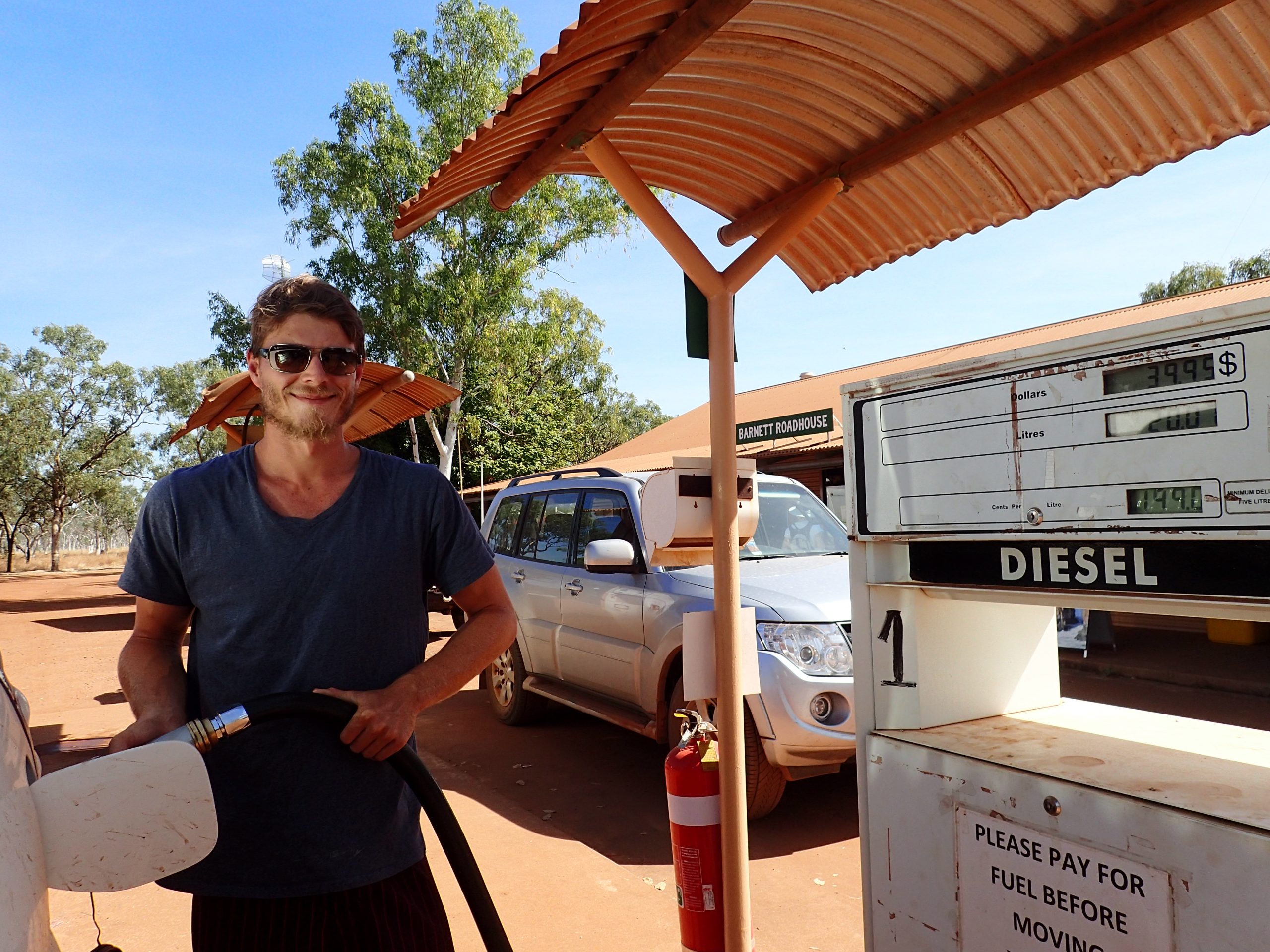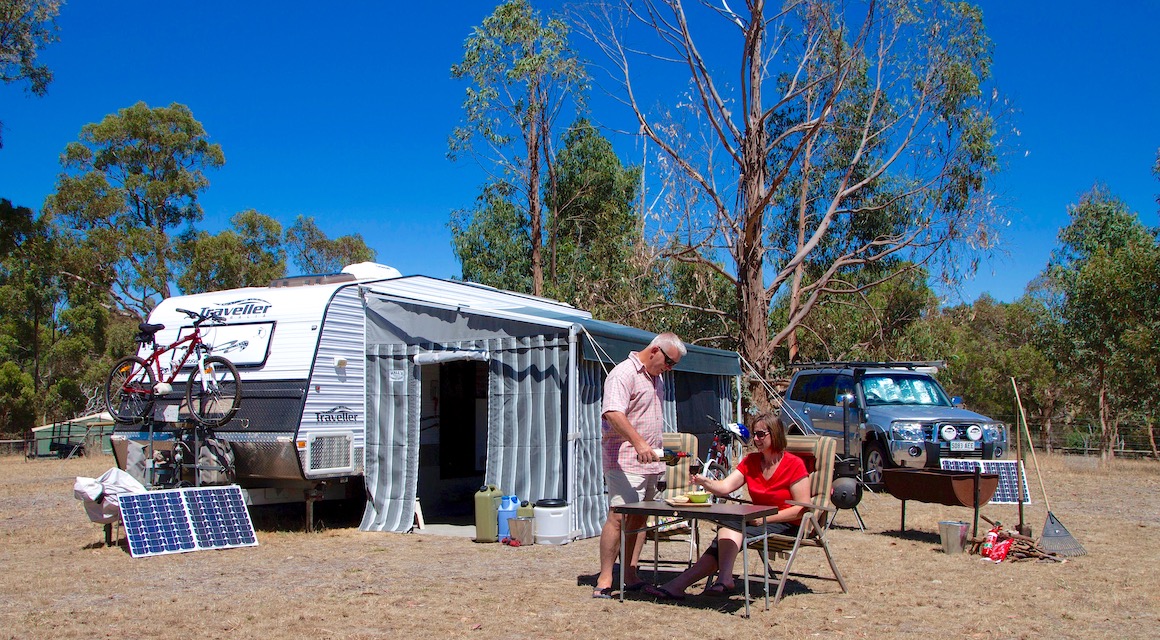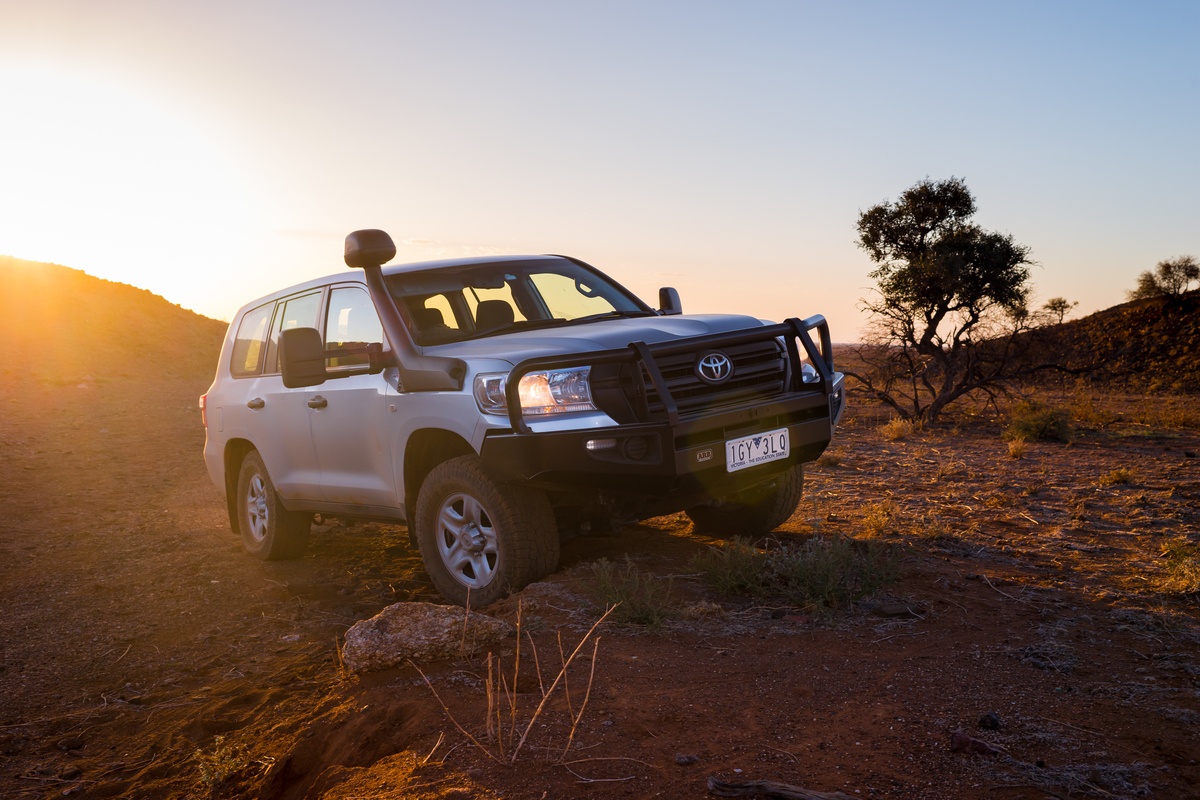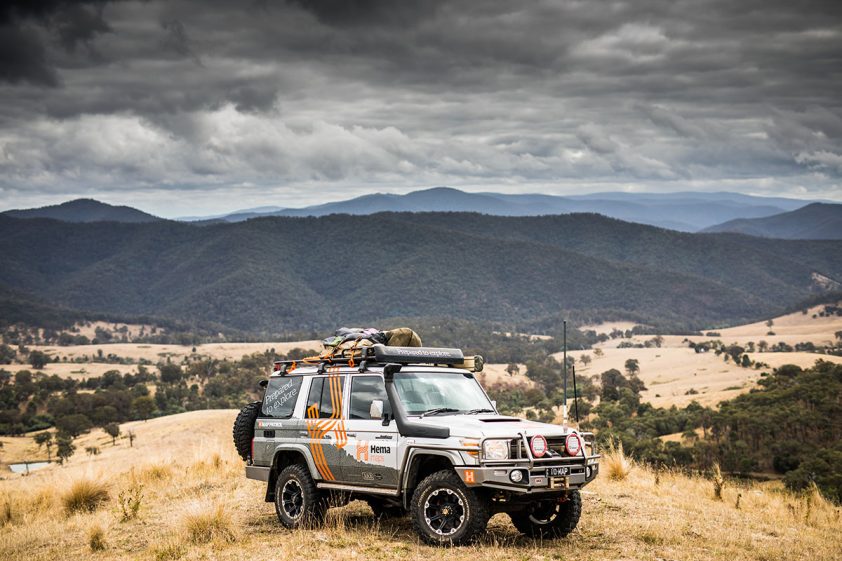Budget
Before the trip, we worked out a rough itinerary to get an idea of how far we’d be travelling on our big lap. We then multiplied this distance by 1.5 to allow for the extra kilometres we were likely to clock up.
To budget for our probable weekly fuel spend, we considered the distance we would travel, estimating a fuel-consumption rate of 16 litres per 100 km and an average fuel price of $1.40 per litre.
We didn’t take these calculations as gospel, but it’s a pretty good way to ensure we’re saving enough cash each week to keep the tank full.
Adjust your speed
We soon learned that driving at the speed limit quickly chews through the diesel. Since dropping back to around 95km per hour on highways, we’ve been able to reduce our fuel consumption when towing.
Unhitch before sightseeing
When possible, we like to find a camp spot, unhitch the van and go exploring in our 4WD. Having the option to take off-road trips without the van has helped us cover a lot of ground for a lot less money. We’ve seen the Gibb River Road, the Dampier Peninsula, Kings Canyon and Uluru.
Watch for winds
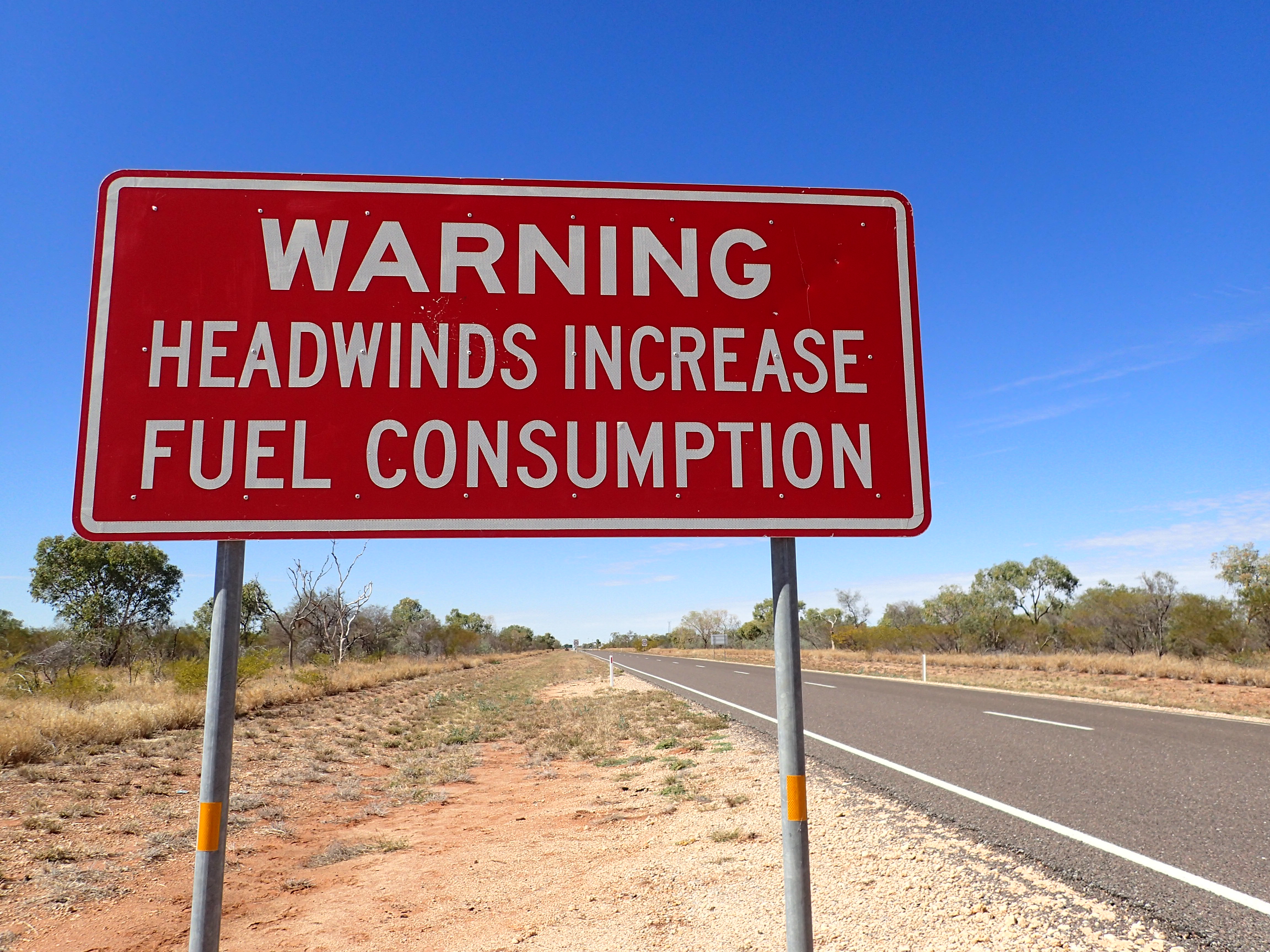
When we have reception, we check the forecast, which can help us avoid driving long distances into a headwind, which uses more fuel.
Choose your pit stop
Knowing the price of fuel in each location is helpful, as is having a long-range tank. This means you can fill up at cheaper service stations and avoid paying in excess of $2 per litre in some remote areas. Using supermarket receipts to save $0.04 per litre soon adds up and saves money, too.
On this trip, we expect to save up to $200 from fuel discounts.
Maintain wheel alignment and tyre pressure
After three months of driving, it’s no surprise that the van’s wheel alignment is a little shabby. We had the wheels aligned in Broome, and since then it’s been easier to drive and is most likely running more economically. We regularly check the tyre pressure, too. It’s an easy task that ensures we’re driving at optimal pressure to reduce rolling resistance.
Pack lightly
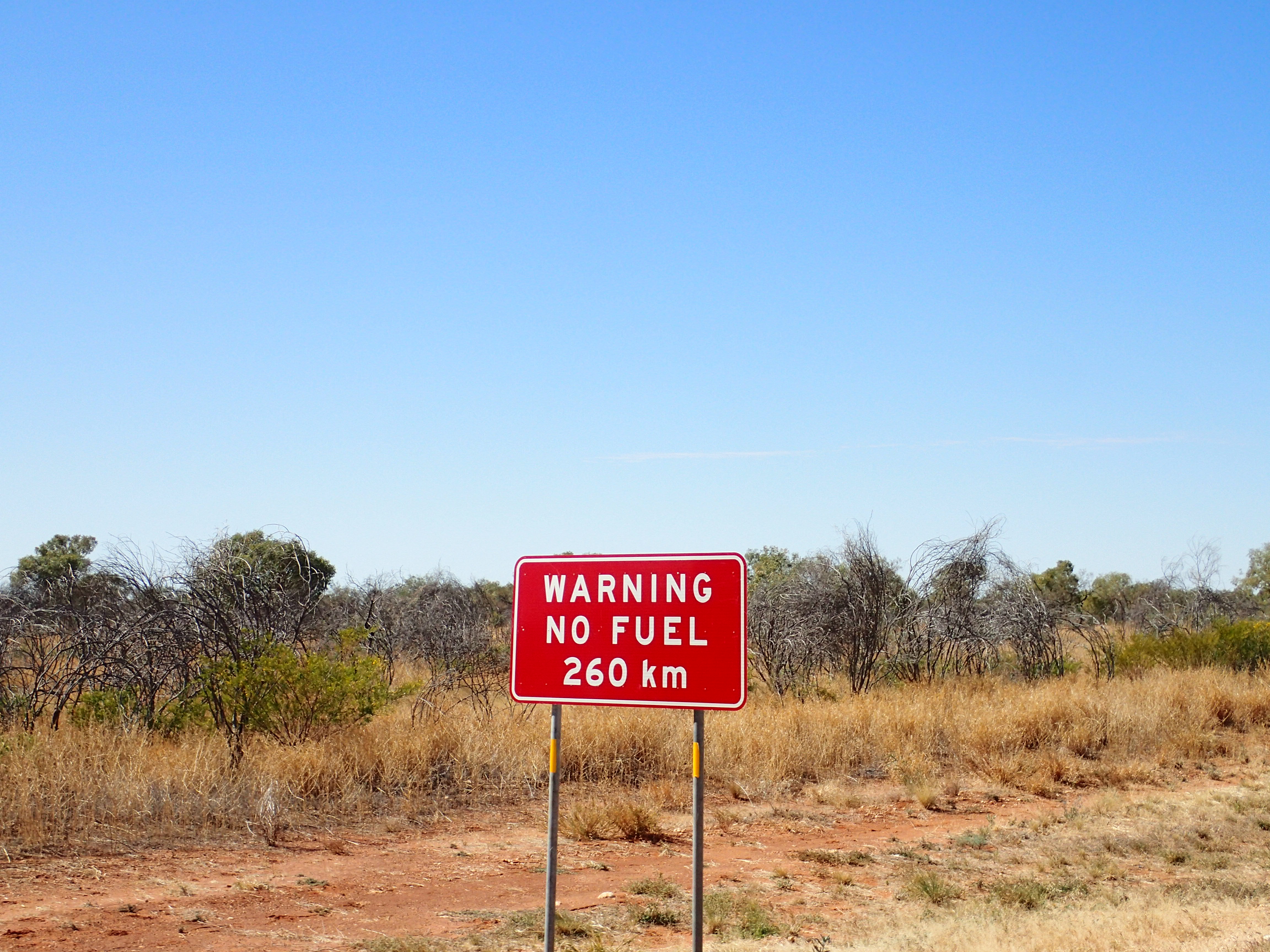
Travelling with only the bare essentials and packing wisely certainly helps. Ever since Drew securely stowed many of our roof-rack items in the car, we’ve noticed that driving is much easier, and this is probably saving some fuel.
Thanks to some careful budgeting and minor adjustments, we’ve been able to save on fuel costs – leaving us with more cash to spend on seeing Australia’s sights.
Next week, the Young Nomads share their advice on what to do when large trucks overtake.

